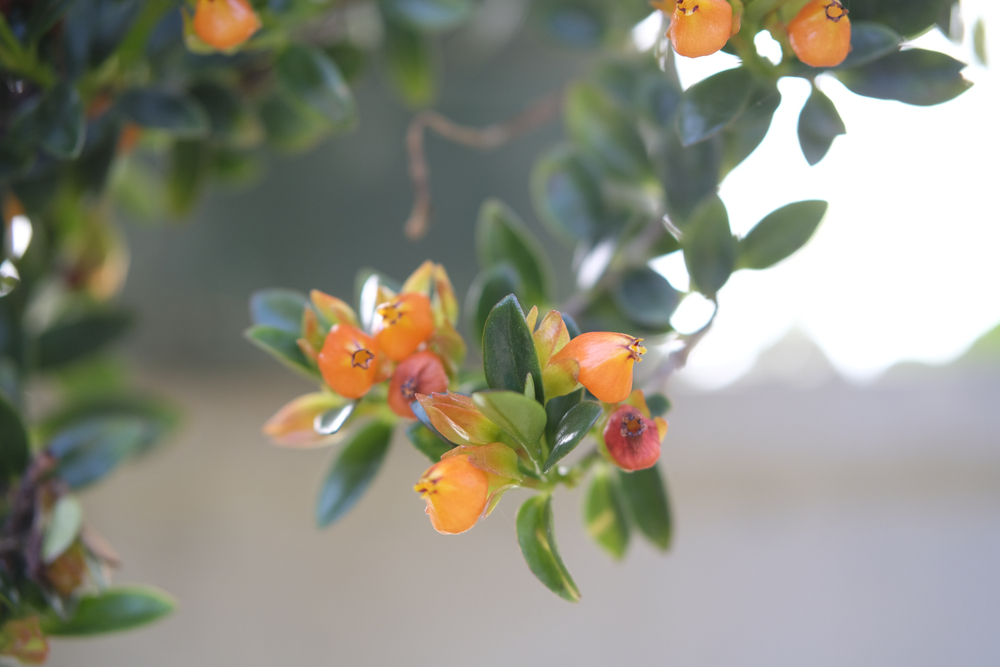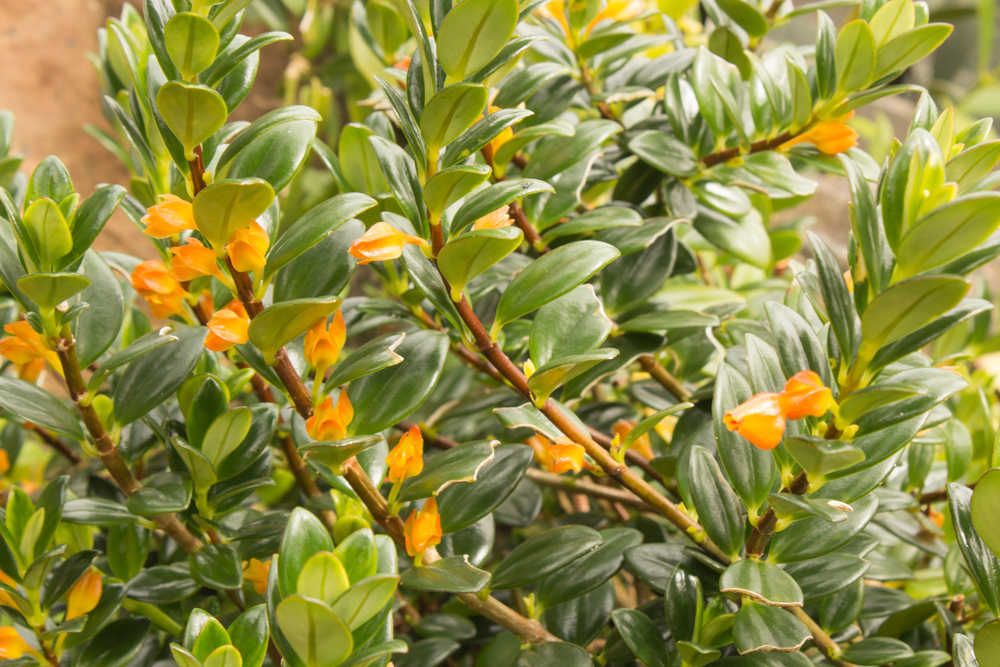With its vibrant green leaves and cascading flowers, Nematanthus Gregarius is an eye-catching plant. This plant is relatively easy to care for, making it a popular choice for both experienced and beginner gardeners.
Here are a few things to keep in mind when caring for your Nematanthus Gregarius:
| Botanical Name | Nematanthus Gregarius |
| Common Name | Goldfish Plant |
| Plant Type | Perennial |
| Flower Color | Orange, Yellow, Red |
| Size When Mature | 20 inches |
| Bloom Time | All year long |
| Sun Requirements | Partial to Full Sun |
| USDA Hardiness Zones | 10 – 12 |
| Soil PH Range | 6.1-6.5 |
| Soil Type | Acidic, Porous, Well-draining |
| Water Needs | Low |
| Native Area | Brazil |
What You Need to Know About Nematanthus Gregarius
The Nematanthus Gregarius, also known as the Goldfish plant, is a member of the Gesneriaceae family and is native to Brazil. It is an evergreen plant that can grow up to 20 inches tall. It has small, fleshy, and oval-shaped leaves that are evergreen, having a deep green color. They are arranged in an opposite pattern on the stems.
The plant also produces flowers that are tubular in shape and have five lobes. The flowers come in different colors, including yellow, orange, and red. They bloom all throughout the year, but the plant produces the most flowers during the spring and summertime.
Caring for this plant is really easy, and it does not require much maintenance. It can tolerate a wide range of growing conditions and can even thrive in low-light environments. This plant is perfect for new gardeners or those who do not have a lot of time to care for their plants.
How to Care for Nematanthus Gregarius
Here’s everything you need to know about growing and caring for a thriving Nematanthus Gregarius:
Light
When it comes to light, this plant can tolerate a wide range of lighting conditions. It can grow in both low and bright light environments. However, it will produce the most flowers when it is grown in bright, indirect sunlight. Filtered light is ideal for this plant so that it does not get too much direct sunlight, which can scorch the leaves.
Water and Soil Needs
The Nematanthus Gregarius does not love being moist. This plant prefers to be on the drier side and does not like having its roots wet for extended periods of time. When watering this plant, make sure the soil is dry to the touch before watering it again. It is best to water this plant about once a week or when the topsoil is completely dry.
The plant’s preference when it comes to soil is a rich, porous, and well-draining potting mix. It prefers slightly acidic soil with a pH range of 6.1-6.5. To achieve the perfect soil pH for this plant, mix in some peat moss or compost.
Temperature Requirements
Nematanthus Gregarius is one of those plants that prefer warm room temperature conditions. It prefers a temperature range of 60-80°F. The plant is hardy in USDA zones 10-12. If the temperature gets too cold for this plant, the leaves will start to turn yellow and drop off.
Fertilizer
The best fertilizer to use on a Nematanthus Gregarius is a balanced liquid fertilizer. The plant does not require too much fertilizing and can actually be sensitive to too much fertilizer. It is best to fertilize this plant about once a month during the spring and summertime when it is actively growing.
Common Diseases
The Nematanthus Gregarius is susceptible to a few common diseases. These include botrytis and fungal leaf spot.
Botrytis is caused by Botrytis Cinerea, which is a type of fungus. This disease affects both the leaves and flowers of the plant. The symptoms include brown or gray spots on the leaves and flowers, as well as leaf drop. To treat this disease, remove any affected leaves or flowers and destroy them. Make sure to sterilize your pruning tools before using them on other plants.
Fungal leaf spot is another common disease that can affect the Nematanthus Gregarius. This disease is caused by different types of fungi. They show up as brown or black spots on the leaves. These spots can eventually turn yellow and cause the leaves to drop off. To prevent this disease, make sure your plant has good air circulation and is not being overwatered. If the plant does get this disease, remove any affected leaves and destroy them.
Nematanthus Gregarius Propagation
Propagating Nematanthus Gregarius is easy and can be done through stem cuttings.
To do this, take a 4-6 inch cutting from the tips of the plant. Make sure there are at least two leaves on the cutting.
Dip the cutting in rooting hormone and plant it in a pot filled with moistened perlite or sand. Afterward, the pot should be placed in an area with bright, indirect sunlight. Keep the soil moist all throughout the rooting process, which can take 4-6 weeks.
Once the cutting has rooted, you can transplant it into a pot filled with regular potting mix. Make sure to water it well and place it in an area with bright, indirect sunlight.


